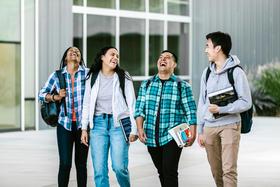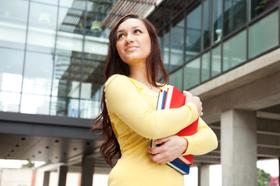How To Craft the Perfect College Admissions Essay
Every year, colleges receive thousands of applications from qualified students.
- Each school has its own criteria for admission, but test scores and your high school GPA will only get you so far.
- In addition to these metrics, colleges and universities use various other things to narrow down their list of applications.
- The college admissions essay is one of them.
Canva generated this vector of a student writing her admissions essay.

When filling out college applications, you have the opportunity to highlight your accomplishments and relevant experiences.
- However, those things don’t necessarily paint an accurate picture of who you are.
- That’s where the admissions essay comes in.
- This is your chance to tell your story.
- This will give the admissions committee a clearer idea of what makes you unique.
- It will show why you would be a good fit for their school.
Writing a college admissions essay can be a nerve-wracking experience because there is so much riding on it. Keep reading to receive an in-depth guide to crafting the perfect college admissions essay.
General Guidelines for Admissions Essays
Before we get into the nitty-gritty details of crafting an unforgettable essay, let’s highlight some simple tips to keep in mind as you write:
- Keep it concise. Even if the application doesn’t specify a word limit, most admissions





















